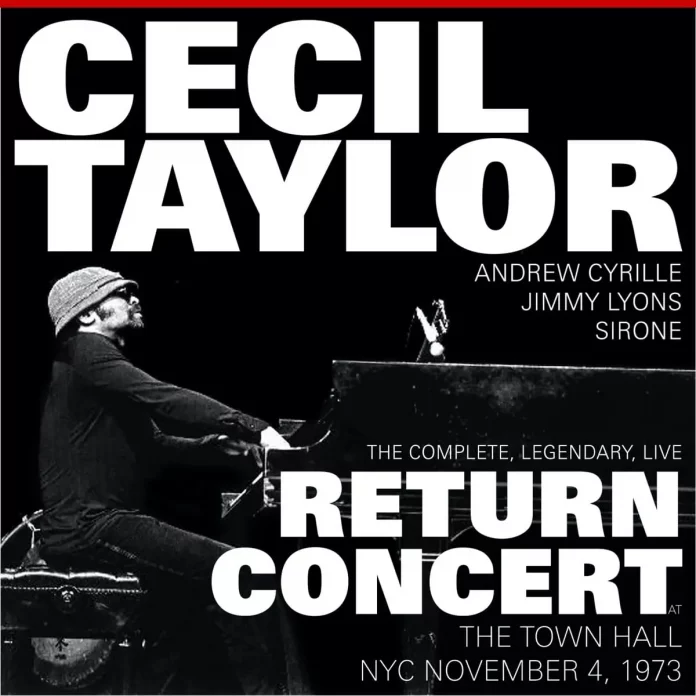This concert certainly is legendary. In 1973, Cecil Taylor had been in self-imposed recording exile for five years, working as visiting professor mostly at Antioch College. He returned to live performance at Town Hall, New York City, reuniting with long-time partners Jimmy Lyons and Andrew Cyrille, plus bassist Sirone. Part two of the concert was released on Taylor’s own Unit Core label as Spring Of Two Blue-J’s. Gary Giddins named the album his record of the year, later commenting that it meant the end of the pianist’s marginalisation.
Probably due to its 88-minute length, the concert’s first half remained unissued. Now the concert is available in its entirety, as a digital/streaming release. It’s a raw, visceral musical experience, one of the finest albums of free jazz; the recording quality, for a live event, is excellent. The participants were inspired to white heat – their work in the Blue Note studio, high-energy though it was, is somehow cooler.
Jimmy Lyons (1931-86) was indelibly linked with Taylor, a constant in his ensembles from 1960 till his death. He didn’t record much in other contexts, and remains neglected, his work poorly understood. The consensus is that his rhythms and phrasing were derived from bop – Parker in particular – and for some, he lent an explicitly swinging element to the pianist’s music. But surely this was always present in Taylor’s free jazz, a genre which Adam Fairhall has described has having an “ebbing and flowing pulse … a tumbling momentum”.
However, the Parker connection is interesting. It’s true that in the less intense passages, it could almost be Parker playing on this record. But any altoist born around 1930 – that is, any from the heroic era of free jazz – is likely to have Bird as their model. (The main stylistic alternative, but from an earlier era, would be Johnny Hodges.) Is Lyons’ sound more Parkerish than Ornette’s? Maybe so.
Taylor’s work endlessly fascinates, and is still not well understood by me, at any rate. Like Parker, he seems to use a mosaic technique, in his use of repeated motifs that he constantly varies, and in distinct intervallic structures – hence the many academic analyses by music theorists. Equally vital are the contributions of Sirone and the incredible Andrew Cyrille, the only member of the quartet still living, who is still on top form in his recent work for ECM. An essential release.
Discography
Autumn/Parade (88.00); Spring of Two Blue-J’s (38.13)
Taylor (p); Jimmy Lyons (as); Sirone (b); Andrew Cyrille (d). New York City, 4 November 1973.
Oblivion Records OD-8
















